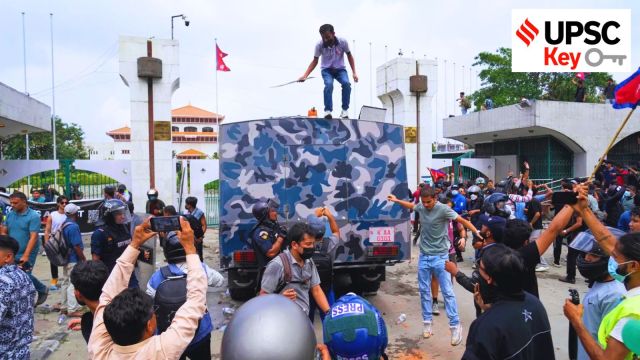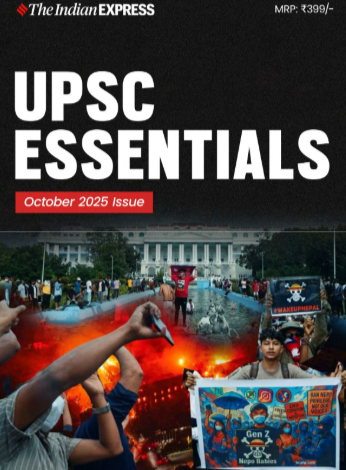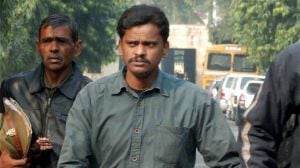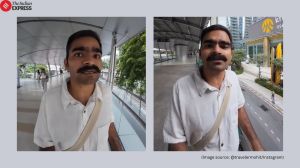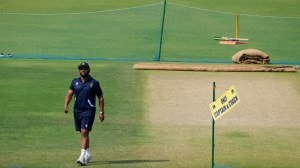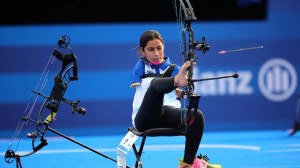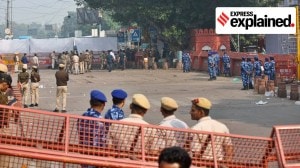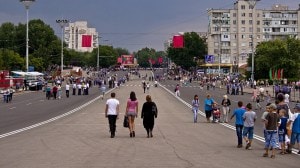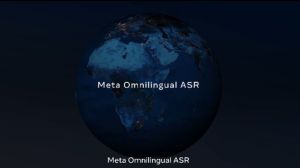
Preliminary Examination: Current events of national and international importance.
Mains Examination: General Studies-II: India and its neighbourhood- relations.
What’s the ongoing story: The house of Nepal’s Prime Minister KP Sharma Oli and other political leaders were set on fire on Tuesday, as protests raged in defiance of a curfew order a day after the killing of 19 protesters. Oli has resigned from his post.
Key Points to Ponder:
— Why had the Nepal government banned social media sites?
Story continues below this ad
— Why are the ongoing demonstrations in Nepal being called the Gen Z protests?
— Why is the debate related to social media regulation?
— What are the advantages and disadvantages of social media sites?
— What can be the implications of blanket bans on social media platforms?
— How is social media regulated in India?
— What is the ethical dilemma between regulating misinformation on social media and protecting freedom of expression?
Story continues below this ad
— What can be the regional implications of Nepal’s ongoing political churn and public anger against its leadership?
— What can be the impact of political instability in Nepal on India–Nepal relations?
Key Takeaways:
— The current protests are being called the GenZ protests, as many of its participants are under 28 years of age. On Monday, thousands had gathered outside Parliament, with many in their school uniforms. After police action led to deaths, Home minister Ramesh Lekhak resigned on moral grounds.
— This was the first time the youth of Nepal, the ‘GenZ’, mobilised on the streets like this. Organisers asked political parties and their youth wings to stay away.
Story continues below this ad
— While the immediate trigger for the protests was a now-lifted ban on social media platforms, grievances had been simmering in Nepal for a while now, specially over the corruption allegations against the political leadership.
— The Nepal government last week banned 26 social media sites, including the Meta-owned Facebook, WhatsApp and Instagram, X, and YouTube, for not complying with an earlier order.
— The Nepal government has sought to regulate big social media companies for more than a year, citing a rise in cyber crimes, fake news, and misleading content. Last month, armed with an order from Nepal’s top court, the government gave the companies a final deadline to register with the government, name a grievance handler, and agree to remove posts the government flagged. Those who did not register were banned.
— Those who registered and escaped the ban are TikTok, Viber, WeTalk, Nimbuzz and Poppo Live, Reuters reported. TikTok had previously been banned in 2023 but allowed to resume after it reached an agreement with the government.
Story continues below this ad
— Prime Minister K P Sharma Oli on Sunday said his party was not against social media, “but what cannot be accepted is those doing business in Nepal, making money, and yet not complying with the law”, as quoted by PTI.
— Critics of the move, however, say the government is trying to police self expression, muzzle criticism, and curb press freedom. Also, many in Nepal’s tourism-powered economy rely on social media for their businesses, while for its expats, social media is one way of staying in touch with their country and with family members left behind.
— The social media ban is emblematic of the larger churn in Nepal. The youth, especially, are increasingly frustrated with the same set of 70-plus leaders, all facing corruption allegations, coming in and out of power since the country became a democratic republic in 2008.
— In this scenario, the government banning most major social media platforms has raised suspicions. A Bill to police social media platforms is also due to come up in Parliament.
Story continues below this ad
— In the lead-up to Monday’s events, young people protesting against the social media ban had also been posting about corruption among the ruling class and about ‘Nepo Babies’, to attack entrenched privilege. The terms ‘Nepo Babies’ and ‘Nepo Kids’ were trending online, with people posting pictures of the young members of prominent families and questioning how their lifestyle was funded.
— Monday’s rally was organised by a group called Hami Nepal. According to Kathmandu Post, the group’s chairperson, Sudhan Gurung, said the protest was “a response to government actions and corruption”.
— Added to this is political churn, with power rotating among Oli, Pushpa Kamal Dahal Prachanda of the Maoist Centre, and five-time PM Sher Bahadur Deuba in alliances that are frequently made and unmade.
— In fact, protests had broken out in Nepal a few months ago in March too, although then, many had demanded a return to monarchy, claiming the experiment of making Nepal a republic had failed.
Other Important Articles Covering the same topic
Story continues below this ad
📍Nepal’s Gen Z protests are not just about social media. They are fighting for the country’s future
Previous year UPSC Prelims/Mains Question Covering similar theme:
(1) Consider the following pairs: (UPSC CSE 2016)
|
Community sometimes mentioned in the news |
In the affairs of |
| 1. |
Kurd |
Bangladesh |
| 2. |
Madhesi |
Nepal |
| 3. |
Rohingya |
Myanmar |
Which of the pairs given above is/are correctly matched?
(a) 1 and 2 only
(b) 2 only
(c) 2 and 3 only
(d) 3 only
Syllabus:
Preliminary Examination: Current events of national and international importance.
Main Examination: General Studies-II, III: Functions and responsibilities of the Union and the States, issues and challenges pertaining to the federal structure, Linkages between development and spread of extremism and Role of external state and non-state actors in creating challenges to internal security.
What’s the ongoing story: Ahead of Prime Minister Narendra Modi’s proposed visit to Manipur later this month, his first to the state since ethnic conflict erupted in May 2023, the Union Ministry of Home Affairs (MHA) on Thursday (September 4) made two significant announcements.
Key Points to Ponder:
— Manipur Violence-what you know till now?
— What is the cause of ethnic violence in Manipur?
— What is Suspension of Operations (SoO) agreement?
Story continues below this ad
— Examine the role of ethnic and communal tensions in the North-eastern region of India with a focus on the Manipur conflict.
— What are the socio-political and historical reasons for persistent violence in the North-eastern states of India?
— What measures can the government take to ensure peace and harmony in the Northeast region?
— Analyse the role of central and state governments in mitigating communal and ethnic violence in the North-eastern region.
Key Takeaways:
Story continues below this ad
— The Suspension of Operations (SoO) agreement with militant groups under the umbrellas of Kuki National Organisation (KNO) and United People’s Front (UPF) has been renewed with renegotiated terms.
— The Churachandpur-based civil society organisation Kuki-Zo Council had “decided to open National Highway-02” for the “free movement” of commuters and essential groups after a series of meetings with MHA officials.
— The SoO agreement is essentially a tripartite ceasefire deal to initiate political dialogue. Signed in 2008, the agreement was between the Centre, the Manipur state government, and the KNO and the UPF, two umbrella groups comprising 24 separate Kuki-Zomi insurgent groups.
— The SoO deal was renewed periodically before the Biren Singh-led state government unilaterally pulled out of the agreement with two groups, the Zomi Revolutionary Army (ZRA) and the Kuki National Army (KNA), in March 2023. Singh accused the ZRA and the KNA of “influencing agitation” after eviction notices were served to villages in the Kuki-Zo majority Churachandpur district.
— After the conflict erupted in May, as insurgent groups on both sides of the Kuki-Meitei ethnic divide facilitated and participated in the violence, the agreement lapsed in 2024.
— According to the MHA, the revised ground rules in the agreement include honouring the “territorial integrity of Manipur” and working for a negotiated political solution to bring lasting peace and stability to the state. According to the MHA, the KNO and the UPF have agreed to the following.
— Relocating Kuki militant camps from fringe areas. There are 14 Kuki militant camps in hills of Manipur; seven are at the periphery of the Kuki-dominated hills, near the Meitei-dominated valley. Meiteis have long called for these camps’ relocation, alleging that they are used to launch attacks on nearby Meitei villages.
— The revised SoO will also facilitate consolidation of smaller camps into bigger ones, thus reducing the number of camps.
— Depositing their weapons at the nearest CRPF/BSF camps. This will assuage allegations that weapons from militant camps were being used to launch attacks.
— The government has already taken care of some key Kuki demands, including for the removal of Biren Singh as Chief Minister. The hill tribes have long alleged that Singh had been partisan during the ethnic conflict. In fact, it was only after the imposition of President’s Rule in Manipur in February that Kuki militant groups began engaging with the Centre.
— Another Kuki concern was regarding Valley-based Meitei insurgent groups who managed to carve a foothold in Imphal, and were operating freely despite being banned. In November, 2023, the government had signed a peace agreement with the UNLF, one of the oldest militant groups in the Valley.
— The government is now erecting camps for the UNLF and is also preparing ID cards of UNLF cadres who will be staying in these camps. Sources indicated the process is nearing completion.
Other Important Articles Covering the same topic:
📍Centre claims Kukis ready for free movement in Manipur, days ahead of PM visit
📍Pratap Bhanu Mehta writes on Manipur: The darkness we unsee
FRONT
Syllabus:
Preliminary Examination: Current events of national and international importance.
Mains Examination: General Studies-II: Bilateral, regional and global groupings and agreements involving India and/or affecting India’s interests.
What’s the ongoing story: In an oblique reference to the US administration’s decision to impose an additional 25 per cent tariff on India as penalty for purchase of Russian oil, External Affairs Minister S Jaishankar on Monday expressed concern at the “linking of trade measures to non-trade matters”. Calling for a “stable and predictable environment for trade and investment”, he underlined that economic practices should be “fair, transparent and to everyone’s benefit”.
Key Points to Ponder:
— Read about the evolution of BRICS from Russia-China (RC) to Russia-India-China (RIC) to Brazil- Russia-India-China (BRIC) to Brazil-Russia-India-China-South Africa (BRICS)
— What is the Fortaleza Declaration?
— What is the significance of BRICS for India?
— What are the key highlights of BRICS Summit 2025?
— How is BRICS rewriting some of the rules of global politics, and increasingly positioning itself as a challenger to the Western-led liberal international order?
Key Takeaways:
— The summit was convened by Brazil’s President Luiz Inacio Lula da Silva in the wake of the tariffs imposed by the US administration led by President Donald Trump. Jaishankar represented Prime Minister Narendra Modi at the summit that saw the participation of Chinese President Xi Jinping, Russian President Vladimir Putin and several other leaders of the grouping.
— The US has imposed 50 per cent tariffs on both India and Brazil. Jaishankar’s participation, in place of Modi, is seen as part of India’s tightrope walk with the US.
— “The members of BRICS represent a broad diversity of societies who are nevertheless deeply affected by these developments. Even in the past, our endeavour has been to find common ground between our respective national policies and to act on that basis. Today, the focus is on stabilising the international economy and the world order. But it is equally essential that we turn our attention to ongoing conflicts, not least because they have direct developmental and supply chain implications. Furthermore, as we head towards the next UN General Assembly Session, an exchange of views on reforming multilateralism would be appropriate,” Jaishankar said.
— He said that trade patterns and market access are prominent issues in the global economic discourse today.
Do You Know:
— BRICS stands for Brazil, Russia, India, China, and South Africa, the original five members who were large, non-Western economies. In January this year, Indonesia officially joined the BRICS as a full member taking total membership to 10. Egypt, Ethiopia, Iran, and the United Arab Emirates joined the block last year. The organisation now represents almost half the world’s population and almost one-quarter of the world’s economy. Saudi Arabia has been invited to join.
— The acronym BRIC was first used in 2001 by Goldman Sachs in their Global Economics Paper, ‘The World Needs Better Economic BRICs’. The paper projected that Brazil, Russia, India, and China would be among the world’s largest economies in the next 50 years or so.
— As a formal grouping, BRIC started after the meeting of the leaders of Russia, India and China in St. Petersburg on the margins of the G8 Outreach Summit in 2006. The grouping was formalised during the first meeting of BRIC Foreign Ministers on the margins of the UNGA in New York in 2006.
— The first BRIC Summit was held in Yekaterinburg, Russia, in 2009. It was decided to include South Africa at the BRIC Foreign Ministers’ meeting in New York in 2010, and accordingly, South Africa attended the 3rd BRICS Summit in Sanya, China, in 2011.
— Notably, the New Development Bank (NDB) is a multilateral development bank established by BRICS countries. The idea of setting up NDB was first conceived in 2012 during the BRICS Summit in New Delhi, India. The agreement to establish it was signed on July 15, 2014, and became operational on July 21, 2015, during the BRICS Summit held in Fortaleza. This is known as the Fortaleza Declaration.
Other Important Articles Covering the same topic:
📍Knowledge Nugget: Why are BRICS and New Development Bank important for UPSC exam?
📍How BRICS is chipping away at the Western order
📍PM Modi’s 4 key suggestions to enhance cooperation among BRICS nations
Previous year UPSC Prelims Question Covering similar theme:
(2) The ‘Fortaleza Declaration’, recently in the news, is related to the affairs of (UPSC CSE 2015)
(a) ASEAN
(b) BRICS
(c) OECD
(d) WTO
Syllabus:
Preliminary Examination: Current events of national importance, Indian Polity and Governance-Constitution.
Mains Examination: General Studies II: Salient features of the Representation of People’s Act, Constitution of India — features, significant provisions and basic structure.
What’s the ongoing story: The Supreme Court Monday directed the Election Commission to accept Aadhaar as a 12th document, in addition to the 11 it has permitted for identification in order to be included in the final electoral roll during the Special Intensive Revision (SIR) in Bihar ahead of Assembly elections.
Key Points to Ponder:
— Know in detail about the Special Intensive Revision.
— What is the purpose of conducting the SIR?
— What is the constitutional backing for conducting SIR?
— How is it different from the National Register of Citizens (NRC)?
— What are the concerns related to SIR?
— What are the provisions related to Citizenship in India?
— Read about Aadhaar.
— Read about the Election Commission of India, its powers and functions.
Key Takeaways:
— The bench of Justices Surya Kant and Joymalya Bagchi, however, made it clear that Aadhaar “is not proof of citizenship”, and stated that the EC will be entitled to assess its authenticity. The court said the EC “shall issue instructions in this regard” by Tuesday.
— Justice Kant said EC need not treat Aadhaar as proof of citizenship, but only for identity purposes. “Aadhaar is an official document like birth certificate, like ration card, like passport. We do not know who has issued it, to whom it was issued, whether it’s genuine, whatever it is. You will take it and examine it,” he said.
— The ongoing SIR has triggered concerns over its potential to disenfranchise electors who do not possess the 11 documents listed by the EC that need to be submitted by electors to make it to the final roll.
— Currently, under the Bihar SIR, those who were on the 2003 electoral rolls need only submit an extract from it as proof. Those who enrolled after 2003 must provide one or more documents from the list of 11, along with a pre-filled enumeration form for existing electors, to establish date and/or place of birth, which, in turn, is used to determine citizenship.
— According to the EC, the list of 11 is indicative, not exhaustive. This is because under The Representation of the People Act, 1950, EROs are empowered to make the electoral roll and the EC can only issue guidelines.
Do You Know:
— The inclusion of Aadhaar as one of the supporting documents by the SC is also crucial in a nationwide SIR. The EC is likely to roll out a SIR of electoral rolls across the country with January 1, 2026, as the qualifying date.
— The Indian Express reported on September 6 that the EC will seek suggestions from CEOs on additional documents that can be submitted by electors to prove their eligibility, including citizenship. While these additional documents could differ from state to state, especially in border states, the SC order makes it difficult for the EC to leave out Aadhaar as a document in other states.
— Article 324(1) of the Constitution gives the ECI the power of “superintendence, direction and control of the preparation of the electoral rolls for, and the conduct of” elections to Parliament and state legislatures.
— Under Section 21(3) of The Representation of the People Act, 1950, the ECI “may at any time… direct a special revision of the electoral roll for any constituency or part of a constituency in such manner as it may think fit”.
— The Registration of Electors’ Rules, 1960, says the revision of rolls can be carried out “either intensively or summarily or partly intensively and partly summarily, as the [ECI] may direct”. In an intensive revision, the electoral roll is prepared afresh; in a summary revision, the roll is amended.
— Special summary revisions take place every year, and the electoral roll is updated before each Lok Sabha and state Assembly election. Intensive revisions have been carried out in 1952-56, 1957, 1961, 1965, 1966, 1983-84, 1987-89, 1992, 1993, 1995, 2002, 2003 and 2004.
— Notably, citizenship in India is determined not based on any one document but a complex set of criteria that includes when a person was born and a determination of the legal status of their parents at the time of their birth under the 1955 Citizenship Act.
Other Important Articles Covering the same topic:
📍Pan-India SIR: EC to meet CEOs, seeks inputs on other eligibility papers
📍No citizenship proof, but Supreme Court raises bar for exclusion by Election Commission
Previous year UPSC Prelims Question Covering similar theme:
(3) Consider the following statements: (UPSC CSE 2017)
1. The Election Commission of India is a five-member body.
2. The Union Ministry of Home Affairs decides the election schedule for the conduct of both general elections and bye-elections.
3. Election Commission resolves the disputes relating to splits/mergers of recognised political parties.
Which of the statements given above is/are correct?
(a) 1 and 2 only
(b) 2 only
(c) 2 and 3 only
(d) 3 only
Previous year UPSC Mains Question Covering similar theme:
To enhance the quality of democracy in India the Election Commission of India has proposed electoral reforms in 2016. What are the suggested reforms and how far are they significant to make democracy successful? (UPSC CSE 2017)
SECOND PAGE
Syllabus:
Preliminary Examination: Current events of national and international importance.
Mains Examination: General Studies-II: Government policies and interventions for development in various sectors and issues arising out of their design and implementation.
What’s the ongoing story: Himachal Pradesh was on Monday declared a “fully literate state,” joining an elite club that only had three other states — Tripura, Mizoram, and Goa — and an Union Territory — Ladakh — as its members.
Key Points to Ponder:
— What is the status of literacy in India?
— What is the National Literacy Mission (NLM)?
— Know about the New Education Policy.
— How is “full literacy” defined in the Indian context?
— What is the ULLAS programme?
— What are the government policies for the promotion of education in India?
— Read about the International Literacy Day 2025.
— How effective are educational programmes in India? What key challenges hinder their implementation and outcomes?
Key Takeaways:
— Announcing the achievement, Chief Minister Sukhvinder Singh Sukhu said that the state has reached a 99.3 per cent literacy rate, way higher than the national benchmark of 95 per cent.
— Sukhu’s announcement came soon after Union Education Minister Dharmendra Pradhan said that India’s literacy rate has risen from 74 per cent in 2011 to 80.9 per cent in 2023-24. Pradhan, virtually addressing an event in Delhi to mark the International Literacy Day 2025, congratulated Ladakh, Mizoram, Goa, Tripura and Himachal Pradesh for achieving full literacy, calling it a reaffirmation of the power of collective effort by government, society and volunteers.
— Pradhan highlighted the role of the ULLAS–Nav Bharat Saaksharta Karyakram, under which more than 3 crore learners and 42 lakh volunteers have enrolled. “Nearly 1.83 crore learners have already taken foundational literacy and numeracy assessments, with 90 per cent success. The programme now offers learning material in 26 Indian languages, making literacy truly inclusive,” he said.
— The theme for this year’s celebration was “Promoting Literacy in the Digital Era”, highlighting the pivotal role of digital technology in enabling reading, writing, numeracy, and lifelong learning skills across the country.
Do You Know:
— The Ministry of Education wrote to the states in August last year, defining “literacy” and “100% literacy” for ULLAS. Literacy was defined as “the ability to read, write, and compute with comprehension, i.e., to identify, understand, interpret and create, along with critical life skills such as digital literacy, financial literacy, etc.”
— It added that achieving 95% literacy in a state/UT may be considered equivalent to being fully literate. The communication also referred to the National Education Policy 2020, which calls for government initiatives for adult education to “expedite the all-important aim of achieving 100% literacy”.
— ULLAS – Nav Bharat Saaksharta Karyakram or New India Literacy Programme (NILP) is a centrally sponsored scheme implemented from 2022-2027. It aims to equip 5 crore ‘non-literate individuals’ over the age of 15 across the country with foundational literacy and numeracy skills, which means basic reading and writing and simple arithmetic learnt in primary classes. The teaching material is also meant to impart ‘critical life skills’ like financial and digital literacy.
— The scheme aligns with the recommendations of the National Education Policy (NEP) 2020. It is based on the spirit of Kartvya Bodh and is being implemented on volunteerism.
Other Important Articles Covering the same topic:
📍UPSC Issue at a Glance | India’s literacy drive and its fully literate states— All you need to know for UPSC Prelims and Mains
Previous year UPSC Prelims Question Covering similar theme:
(4) Which of the following provisions of the Constitution does India have a bearing on Education? (UPSC CSE 2012)
1. Directive Principles of State Policy
2. Rural and Urban Local Bodies
3. Fifth Schedule
4. Sixth Schedule
5. Seventh Schedule
Select the correct answer using the codes given below:
(a) 1 and 2 only
(b) 3, 4 and 5 only
(c) 1, 2 and 5 only
(d) 1, 2, 3, 4 and 5
GOVT & POLITICS
Syllabus:
Preliminary Examination: Current events of national importance, Indian Polity and Governance-Constitution, Political System, Panchayati Raj, Public Policy, Rights Issues, etc.
Mains Examination: General Studies-II: Parliament and State legislatures—structure, functioning, conduct of business, powers & privileges and issues arising out of these.
What’s the ongoing story: While the numbers seem to be stacked in favour of the ruling BJP-led NDA in the Vice-Presidential election scheduled for Tuesday, in which the NDA’s candidate C P Radhakrishnan is pitted against the Opposition INDIA alliance’s nominee Justice (retired) B Sudershan Reddy, the decision of the BJD and the BRS to abstain from voting may further boost Radhakrishnan’s prospects.
Key Points to Ponder:
— What are the constitutional provisions regarding the office of the Vice-President of India?
— How is the Vice-President of India elected?
— What are the eligibility criteria for Vice-Presidential candidates?
— What are the powers and functions of the Vice-President of India, especially as the ex-officio Chairman of the Rajya Sabha?
— What is the procedure for the removal of the Vice-President of India?
— What happens when a Vice-President resigns mid-term, and how long does the new vice president serve in this scenario?
— What is the term of office of Vice-President?
Key Takeaways:
— Both the Naveen Patnaik-led BJD and the K Chandrashekar Rao-headed BRS, which are not part of the NDA or the INDIA bloc, announced Monday that their MPs will abstain from voting in the high-profile election.
— While Radhakrishnan is the Maharashtra Governor, Justice Sudershan Reddy is a former Supreme Court judge. The election to the Vice-President’s post was necessitated by the resignation of Jagdeep Dhankhar on the opening day of Parliament’s monsoon session on July 21, when he suddenly quit citing health concerns.
— The electoral college for the V-P election currently comprises 781 MPs – 239 members of the Rajya Sabha and 542 members of the Lok Sabha.
Do You Know:
— The Vice-President is elected by an electoral college made up of members from both Houses of Parliament — Lok Sabha and Rajya Sabha — including nominated members. Unlike in a presidential election, state legislatures do not participate.
— Voting is held in Parliament House in New Delhi, by secret ballot, using the system of proportional representation with a single transferable vote. Each MP casts a vote by ranking candidates in order of preference. All votes carry equal value.
— To be declared elected, a candidate must reach a required minimum number of votes — called the quota. This is calculated by dividing the total number of valid votes by two and adding one (fractions, if any, are ignored). If no candidate crosses the quota in the first round, the one with the fewest first-preference votes is eliminated, and their votes are transferred to the remaining candidates based on second preferences. The process continues until one candidate crosses the quota.
— A person contesting for the post of Vice-President must be a citizen of India, at least 35 years old, qualified to be elected to the Rajya Sabha, and registered as an elector in any parliamentary constituency. They must not hold any office of profit under the central or state governments, except positions like President, Governor, or Minister.
Other Important Articles Covering the same topic:
📍UPSC Issue at a Glance | Office of Vice-President of India: 5 Key Questions You Must Know for Prelims and Main
Previous year UPSC Prelims Question Covering similar theme:
(5) Consider the following statements: (UPSC CSE 2013)
1. The Chairman and the Deputy Chairman of the Rajya Sabha are not the members of that House.
2. While the nominated members of the two Houses of the Parliament have no voting right in the presidential election, they have the right to vote in the election of the Vice-President.
Which of the statements given above is/are correct?
(a) 1 only
(b) 2 only
(c) Both 1 and 2
(d) Neither 1 nor 2
Previous year UPSC Mains Question Covering similar theme:
Discuss the role of the Vice-President of India as the Chairman of the Rajya Sabha. (UPSC CSE 2022)
THE IDEAS PAGE
Syllabus:
Preliminary Examination: Current events of national and international importance
Mains Examination: General Studies-II, III: Powers, functions and responsibilities of various Constitutional Bodies. Indian Economy and issues relating to planning, mobilisation, of resources, growth, development, and employment.
What’s the ongoing story: Prachi Mishra and Shohan Mukherjee write- “Eight years after its launch, India’s Goods and Services Tax (GST) is undergoing its most significant transformation. GST 2.0 prioritises long-term structural reform over immediate revenue maximisation. As the government prepares to implement these changes, the real issue isn’t whether revenues will dip initially, but how these changes will be executed to unleash the full potential of a simplified, business-friendly tax system that can power the next phase of India’s economic growth.
Key Points to Ponder:
— What is Goods and Services Tax (GST), and how does it work?
— What is the purpose of introducing GST? How is it an example of cooperative federalism?
— What is the role and function of the GST council?
— What is the objective of introducing next-generation reforms?
— What are the various tax slabs before and after the reform?
— What are the key GST 2.0’s institutional reforms?
— What is the Laffer curve?
— How are decisions taken in the GST council?
— What do you understand about sin goods?
— How does the process of GST rate rationalisation align with the principle of cooperative federalism in India?
Key Takeaways:
— “At its core, GST 2.0 aims to reduce the complexity that has plagued India’s tax system since independence. The reform’s centrepiece lies in collapsing the current four-slab consumer goods structure (5 per cent, 12 per cent, 18 per cent, 28 per cent) into a more streamlined rate slab of 5 per cent and 18 per cent. Special rates of 0.25 per cent and 3 per cent remain with a new special rate of 40 per cent for a select few items.”
— “The new 40 per cent rate for select luxury and sin goods, replacing the previous 28 per cent plus cess structure, brings mathematical clarity while maintaining the principle that luxury consumption should bear a higher tax burden. Removing the compensation cess on coal, lignite, and peat, even as tax rates rise from 5 per cent to 18 per cent would boost the bottom line of struggling power distribution companies, while luxury items graduating to the 40 per cent bracket reinforces progressive taxation principles.”
— “Analysts fixating on the immediate revenue impact are missing the forest for the trees. Yes, GST collections are projected to drop from Rs 20.2 lakh crore to Rs 19.7 lakh crore in the short term, an Rs 48,000 crore reduction based on FY24 data that aligns with government estimates.”
— “We estimate the effective rate to decrease marginally from 11.64 per cent to 11.43 per cent in the short term. But this temporary revenue sacrifice follows classic economic logic, embodied in the “Laffer curve”: Lower rates can eventually generate higher collections through expanded compliance and economic activity.”
— “Higher revenue collection would depend on two critical factors: Whether businesses actually pass the tax changes on to consumers, and how sensitive consumer demand is to price changes. Research shows that key products moving to the new 40 per cent tax bracket, including soft drinks and tobacco, for example, have relatively inelastic demand, meaning consumers don’t dramatically reduce purchases even when prices rise.”
— “Beyond these demand-side considerations, the reform addresses a more fundamental issue: India’s persistent tax gap. We estimate that the difference between actual and potential collections has kept the country’s tax effort hovering around 70 per cent for over a decade. This represents enormous untapped potential. GST 2.0 directly addresses this challenge by reducing the compliance burden and enhancing voluntary participation in the formal economy.”
— “Markets, however, often focus on the short term, and expectations of higher fiscal deficits due to lower revenues (combined with higher expenditures to support exporters affected by potential trade disruptions) have triggered negative immediate reactions. We expect this to stabilise, particularly given India’s recent sovereign credit rating upgrade and the government’s steadfast commitment to fiscal consolidation.”
— “Despite rate rationalisation capturing headlines, GST 2.0’s institutional reforms deserve equal attention. The operationalisation of the Goods and Services Tax Appellate Tribunal (GSTAT) will finally provide businesses with a dedicated forum for appeals, ending years of procedural uncertainty.”
— “Small exporters, long disadvantaged by cumbersome refund processes, will benefit from the removal of threshold limits on low-value export consignments. The amendment allowing Indian intermediaries to claim export benefits when supplies shift to foreign client locations removes a significant barrier to international trade competitiveness.”
— “GST 2.0 carries several other strategic benefits. By raising tax rates on goods and services typically consumed by younger demographics (ultra-processed food, social media, and online gaming, what the Chief Economic Advisor referred to as the “deadly troika”), GST aims to better harness India’s demographic dividend. Similarly, deterrent rates on tobacco and aerated drinks serve public health objectives while generating revenue from products with inelastic demand.”
— “The government’s challenge is ensuring that the benefits of simplification aren’t undermined by implementation hiccups. This would require robust training for tax officials (including at the state-level), clear communication to businesses, and quick resolution of technical issues that inevitably arise during such systemic changes.”
Do You Know:
— The GST regime came into force after the Constitutional (122nd Amendment) Bill was passed by both Houses of Parliament in 2016. It came into effect in 2017 and was billed as an attempt to simplify the existing tax structure in India, where both the Centre and states levied multiple taxes, and to make it uniform.
— The President set up the GST Council as a joint forum of the Centre and the states, under Article 279A (1) of the amended Constitution. It said that members of the Council include the Union Finance Minister (chairperson), and the Union Minister of State (Finance) from the Centre. Each state can nominate a minister in charge of finance or taxation or any other minister, as a member.
Other Important Articles Covering the same topic:
📍GST 2.0 unveiled: Two-slab structure cleared, new rates will come into effect September 22
📍Explained: What is the GST Council, and what does it do?
Previous year UPSC Prelims Question Covering similar theme:
(6) What is/are the most likely advantages of implementing ‘Goods and Services Tax (GST)’? (UPSC CSE 2017)
1. It will replace multiple taxes collected by multiple authorities and will thus create a single market in India.
2. It will drastically reduce the ‘Current Account Deficit’ of India and will enable it to increase its foreign exchange reserves.
3. It will enormously increase the growth and size of the economy of India and will enable it to overtake China in the near future.
Select the correct answer using the code given below:
(a) 1 only
(b) 2 and 3 only
(c) 1 and 3 only
(d) 1, 2 and 3
Previous year UPSC Mains Question Covering similar theme:
Enumerate the indirect taxes which have been subsumed in the Goods and Services Tax (GST) in India. Also, comment on the revenue implications of the GST introduced in India since July 2017. (UPSC CSE 2019)
|
ALSO IN NEWS
|
| Bhupen Hazarika birth centenary: Assam starts year-long celebrations |
Assam began its year-long celebration birth centenary celebrations of legendary singer, composer, and filmmaker Bhupen Hazarika, who was born on September 8, 1926, on Monday. Hazarika, who had passed away in 2011, was posthumously awarded the Bharat Ratna in 2019. |
| Scientists tap fresh water hiding under the sea, raising hopes and caution for a thirsty world |
Deep in Earth’s past, an icy landscape became a seascape as the ice melted and the oceans rose off what is now the northeastern United States. Nearly 50 years ago, a US government ship searching for minerals and hydrocarbons in the area drilled into the seafloor to see what it could find. It found, of all things, drops to drink under the briny deeps — fresh water. This summer, a first-of-its-kind global research expedition followed up on that surprise. Drilling for fresh water under the salt water off Cape Cod, Expedition 501 extracted thousands of samples from what is now thought to be a massive, hidden aquifer stretching from New Jersey as far north as Maine. |
| Centre panel gives nod to assess impact of rock phosphate mine on bustard habitat |
The Union environment ministry’s expert appraisal committee (EAC) for the non-coal mining sector has given its nod to carry out an environment impact assessment (EIA) study for Birmania Rock Phosphate mine proposed over 400 hectares in the potential Great Indian Bustard (GIB) area in Jaisalmer, Rajasthan, as per ministry documents. Notably, rock phosphate is mined to make phosphate fertilizers. |
| Story of warlord Kony, subject to ICC’s first in Absentia hearing |
International Criminal Court prosecutors will present evidence on Tuesday to back up charges of war crimes and crimes against humanity against notorious fugitive Ugandan warlord Joseph Kony at the global court’s first-ever in absentia hearing. Moving forward without Kony is seen as a test case for other proceedings where the suspect is not in custody, for example Israeli Prime Minister Benjamin Netanyahu or Russian President Vladimir Putin. |
Subscribe to our UPSC newsletter. Stay updated with the latest UPSC articles by joining our Telegram channel – Indian Express UPSC Hub, and follow us on Instagram and X.
🚨 Click Here to read the UPSC Essentials magazine for August 2025. Share your views and suggestions in the comment box or at manas.srivastava@indianexpress.com🚨

